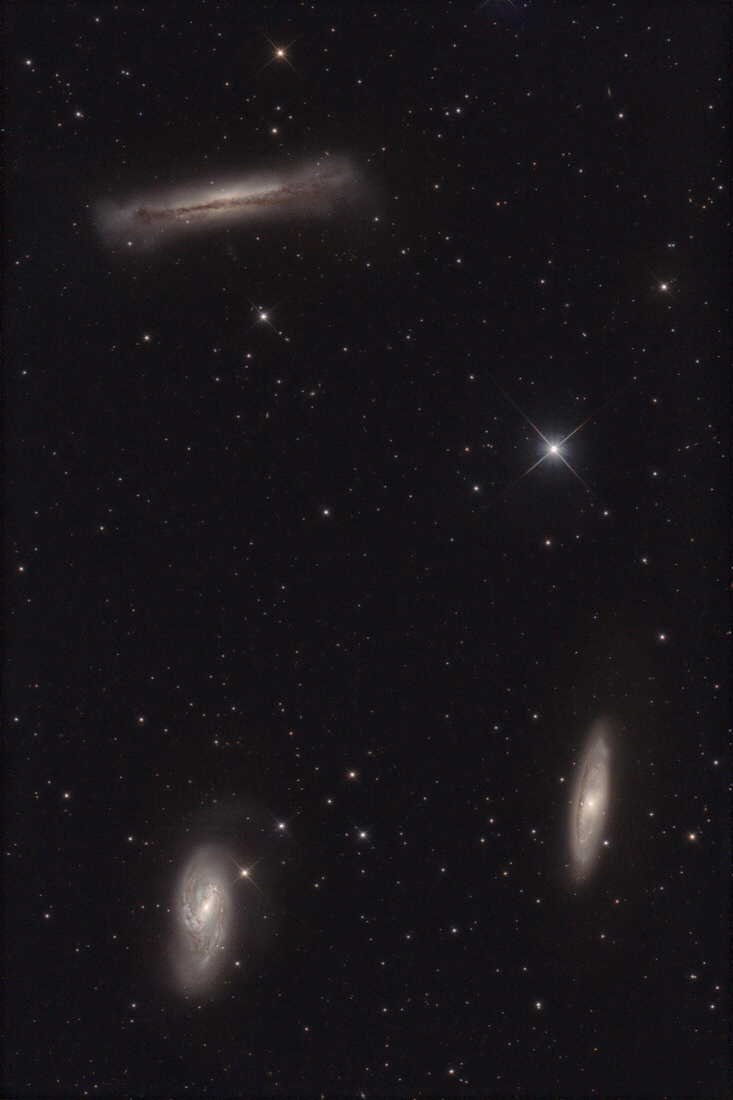
This small group of galaxies consists of the Messier objects M65 (NGC 3623) and M66 (NGC 3627) as well as the edge-on spiral NGC 3628. M65 is located on the right (western) side, M66 on the left side and NGC 3628 on top (north). All galaxies of the Leo Triplet are Sb type spirals, but they are seen at different angles. M66 has spiral arms which are among those most easily seen visually, but at least 10 inch of aperture will be needed to discern them well. M65 appears much flatter as the disk's galaxy is more inclined to the line of sight and features several dust lanes. NGC 3628 is seen edge-on with an almost central dust lane. It is one of the sky's best edge-on galaxies, though its surface brightness is considerable lower than NGC 4565 in Coma Berenices.
Located at a distance of approx. 35 million light years, the Leo Triplet is probably physically related to the M96 group.
Exposure Data
Observing Hints
Starting point for star-hopping to these galaxies is Theta Leonis. If you go straight south from this star, you should find a chain of three brighter stars extending in north-southern direction in your finderscope. M65 and M66 are just a small move east of the northernmost and brightest of these stars, the galaxies are visible in a 7x50 or even better in a 10x50 finderscope during a dark night.
Rich-field telescopes will get M65 and M66 into one field of view in a low-power eyepiece. Both galaxies are visible in small telescopes, but you will need at least 6" or more to see some detail. M65 shows two small "tails" north and south of the core and M66 has one tail into southern direction, these are indications of the galaxie's spiral arms. NGC 3628 is small and dim and no easy target under light-polluted skies, and it will take a night of good transparency, an experienced observer and the usage of averted vision to see the dust band splitting the galaxy into two parts in a 6" telescope. Don't use too much power if you try this, as this will wipe out the dim galaxy, about 70x to 100x is recommended. This is definitly not a task for beginners.
Most galaxies need big telescopes to show well, and the Leo Triplet is no exception there, 8", 10" or more aperture is recommended. For near-photographic views it will take a telescope of about 18" aperture. With such a light-bucket, M65, M66 and NGC 3628 are spectacular sights, the dust band in NGC 3628 is easy to see and even the fringes at both ends of the cigar-shaped galaxy become visible, without averted vision. With such a telescope, you have to be a little bit careful in this region as there are more smaller and dimmer galaxies about and you might get lost ☺